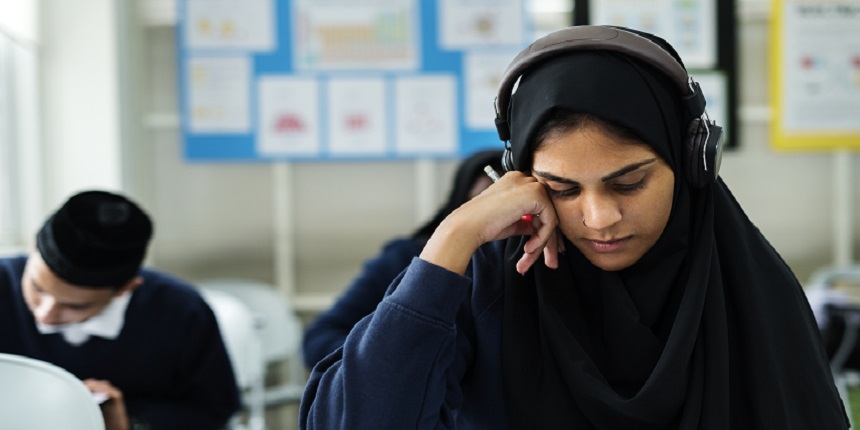Muslim Students in Higher Education: Enrolment, GER drop but more women joining than men
Atul Krishna | November 15, 2023 | 12:56 PM IST | 2 mins read
Enrolment of Muslim students in higher education drops from 21 lakh in 2019-20 to 19.2 lakh in 2020-21, says report.

NEW DELHI: The number of Muslim students enroling in higher education institutions has seen a dip according to an analysis of the latest available All India Survey on Higher Education (AISHE) data. The AISHE report is prepared by the ministry of education on different parameters including student enrolment, teacher’s data, infrastructure, and financial information.
An analysis of the AISHE 2020-21 data, part of a larger report titled State of Muslim Education in India by educationist Arun C Mehta, has found that the total enrolment of Muslim students has declined from over 21 lakh in 2019-20 to 19.2 lakh in 2020-21.
Mehta’s analysis also reveals that the percentage of Muslim student enrolment to total enrolment dropped in 2020-21. In 2019-20, Muslim students amounted to 5.45% of the total students in higher educational institutions but the percentage dipped to 4.64% in 2020-21.
Also Read| Muslim students more likely to drop out at elementary level: UDISE Plus analysis
This dip in the percentage of Muslim students is true for both male and female students. According to the AISHE analysis, the percentage of female Muslim students in higher education dipped from 5.6% in 2019-20 to 4.8% in 2020-21. The percentage of male Muslim students dipped from 5.3% in 2019-20 to 4.5% in 2020-21.
Muslim Students: GER drops too
The analysis also found a similar trend in the Gross Enrolment Ratio (GER). The GER for Muslim students has reduced from 9.79% in 2019-20 to 8.91% in 2020-21. GER is calculated by dividing the total enrolment in a specific level of education by the population in the official age group corresponding to that level of education.
“The GER of Muslim students remains significantly lower than the national average of 27.3%, indicating that various challenges still deter Muslim students from enrolling in higher education,” the analysis said.
Greater gender parity
The analysis also found that there is greater gender parity among Muslim population when it comes to higher education as compared to the national average.
According to the analysis, the Gender Parity Index (GPI) for Muslims in higher education is at 1.01 compared to the national average of 0.93. Moreover, the GPI for Muslims has seen a steady increase from 2016-17, when it was at 0.90.
Also Read| Muslim, SC areas less likely to have government secondary schools: Study
A GPI score less than 1 means that there are more men enrolled and a score greater than 1 means that there are more women enrolled.
“One significant finding from the data is the faster increase in the percentage of female Muslim students enrolling in higher education compared to their male counterparts. This trend indicates a growing interest and determination among female Muslim students to pursue higher education, showcasing the positive impact of efforts to promote gender equality and inclusivity in the education system,” the analysis said.
Follow us for the latest education news on colleges and universities, admission, courses, exams, research, education policies, study abroad and more..
To get in touch, write to us at news@careers360.com.